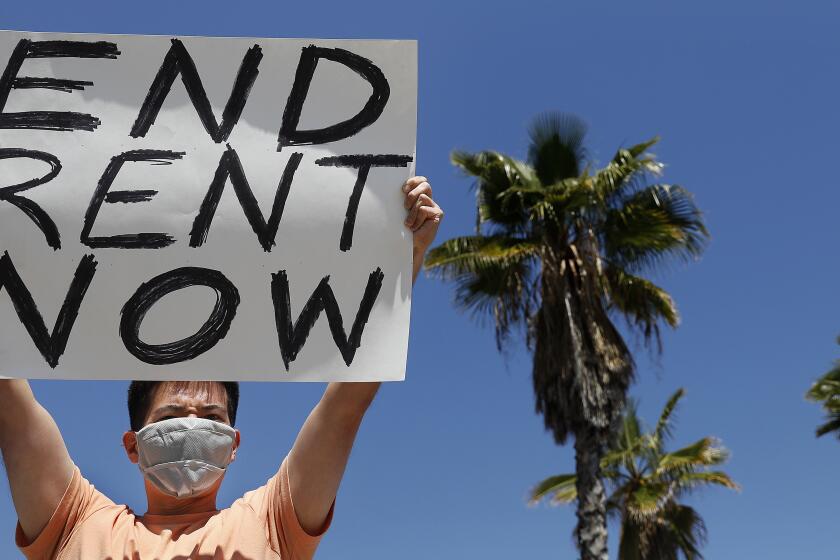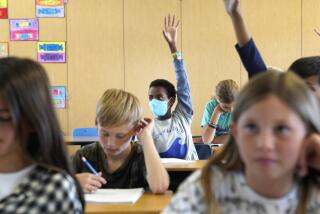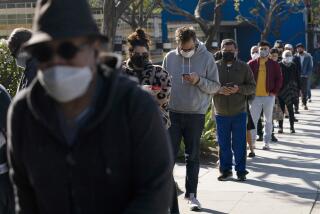California won’t be lifting coronavirus stay-at-home rules anytime soon. Here’s why
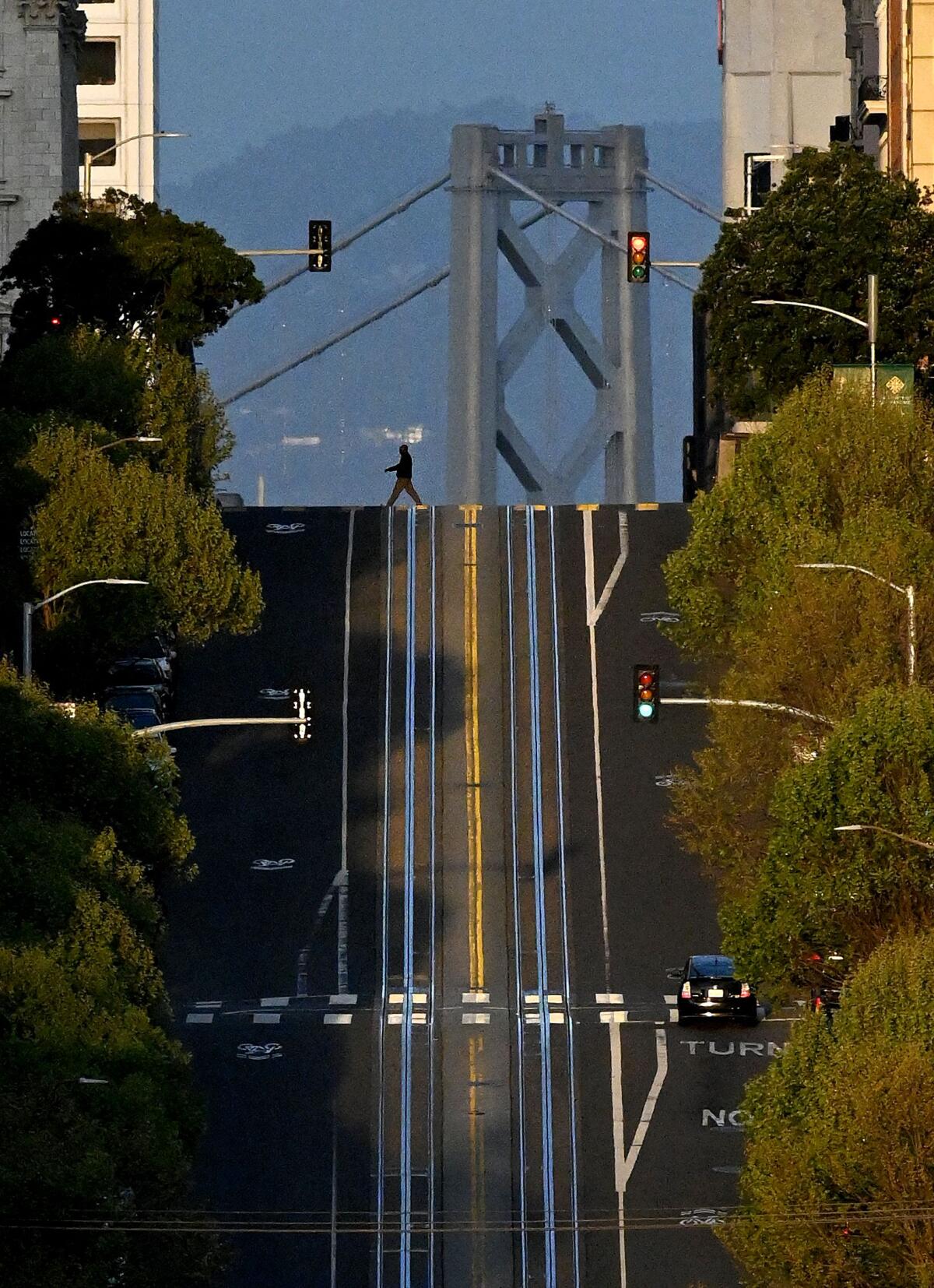
- Share via
SAN FRANCISCO — Even as California sees glimmers of hope amid the coronavirus outbreak, authorities warn that the Golden State won’t be getting back to normal anytime soon.
Officials expect months more of some social distancing policies and warn that lifting the strict rules too early could worsen the health crisis.
The public should realize that coronavirus cases are likely to rise when stay-at-home orders are eased, officials said.
“There will definitely be individuals who will get sick. And because there are individuals who get sick, there will be individuals who die after the order is released, unless we come up with a foolproof immunization, which is highly unlikely,” said Dr. Jeffrey Smith, Santa Clara County executive officer.
These are some of the unusual new scenes across the Southland during the coronavirus outbreak.
Smith on Tuesday told that county’s Board of Supervisors that he did not expect there would be “any sports games until at least Thanksgiving, and we’d be lucky to have them by Thanksgiving. This is not something that’s going to be easy to do.”
In fact, it’s unlikely the new coronavirus will be completely eradicated, and the disease could become seasonal, Dr. Anthony Fauci, director of the National Institute of Allergy and Infectious Diseases, told CBS this week.
That would make it unlike a different deadly coronavirus scare of the past, the virus that caused severe acute respiratory syndrome in 2003, which killed 774 people worldwide and was fully contained within months.
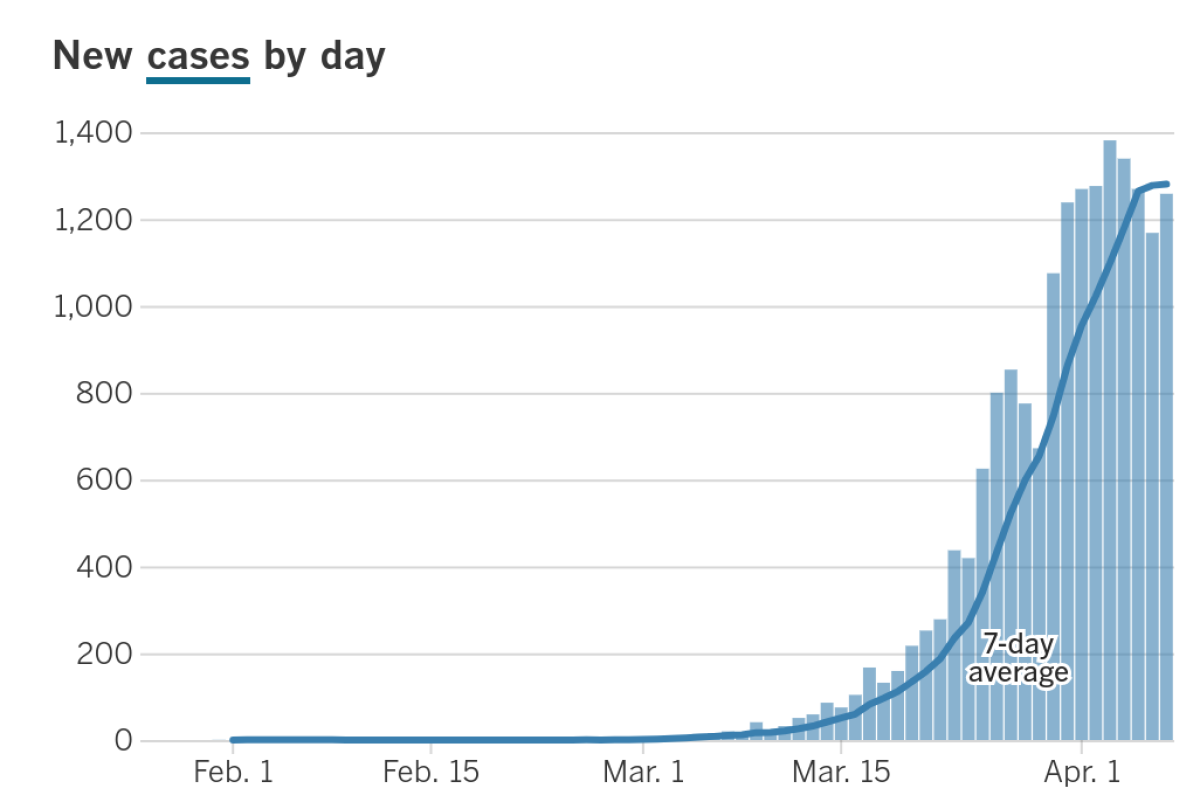
On Monday, Fauci said getting back to normal would mean something different. There will be a gradual process by which society can begin to function again, he said during a news conference, but “if you want to get to pre-coronavirus, that might not ever happen in the sense of the fact that the threat is there.”
Improving trends
Silicon Valley health officials are now expressing more confidence that the shelter-in-place order implemented March 16 is working to curb the spread of the virus. Instead of projecting 50,000 coronavirus cases by May 1, the stay-at-home order may limit the number of cases in Santa Clara County to 2,500 to 12,000, according to a new estimate.
In addition, Santa Clara County — the original epicenter of California’s coronavirus outbreak, where more than 1,200 cases have been reported and more than 40 deaths — may now be on track to have enough hospital beds to handle more COVID-19 patients in the coming weeks, the county public health officer said Tuesday.
Gov. Gavin Newsom said Tuesday that California’s stay-at-home order and other efforts are working to slow the spread of the novel coronavirus.
What’s next?
There are no easy answers about when state officials could begin to dial back the strict stay-at-home orders.
Public health officer Dr. Sara Cody said at a Santa Clara County Board of Supervisors meeting Tuesday there were four things that would need to be in place for stay-at-home orders to be eased:
1. Robust hospital capacity
Hospitals must be able to safely treat residents with the care they need when they need it. That also means hospitals must be able to protect healthcare workers, such as with adequate supplies of masks, gowns and gloves.
Hospitals across California are continuing to find more space to prepare for additional hospital cases. In Marin County, with a population of about 260,000, officials say models suggest a continuous increase in COVID-19 cases and a possible surge in the next two to six weeks. They have been able to increase staffed bed capacity from 239 to about 400.
2. The ability to test for the virus broadly
Being able to test any patients who are showing symptoms is essential. The U.S. has been hobbled by a persistent shortage of tests.
3. The ability to rapidly investigate new cases and isolate the newly infected
Local health officials need to be able to investigate new cases, isolate the newly infected, and find those who may have had close contact with them and quarantine them to see if they show signs of illness.
“When we started back in the end of January, that’s exactly what we were doing: We carefully investigated every case, we carefully traced every contact, but of course, with the counts that we have today, we are not able to do that, and neither is anyone else,” Cody said.
4. Sustained reduction in new coronavirus cases
Finally, “we really need to see the sustained reduction in cases,” Cody said, and it would need to persist for at least one incubation period — the time it might take between infection and when a person shows signs of illness.
“We want to reassure ourselves that, for at least 14 days, we see that things have settled down,” Cody said.
California, initially one of the hardest-hit states, is now seeing a fraction of the cases and deaths of other states. By Tuesday night, California had reported more than 17,600 coronavirus cases and over 400 deaths; New York has reported more than 139,000 cases and more than 5,400 fatalities.
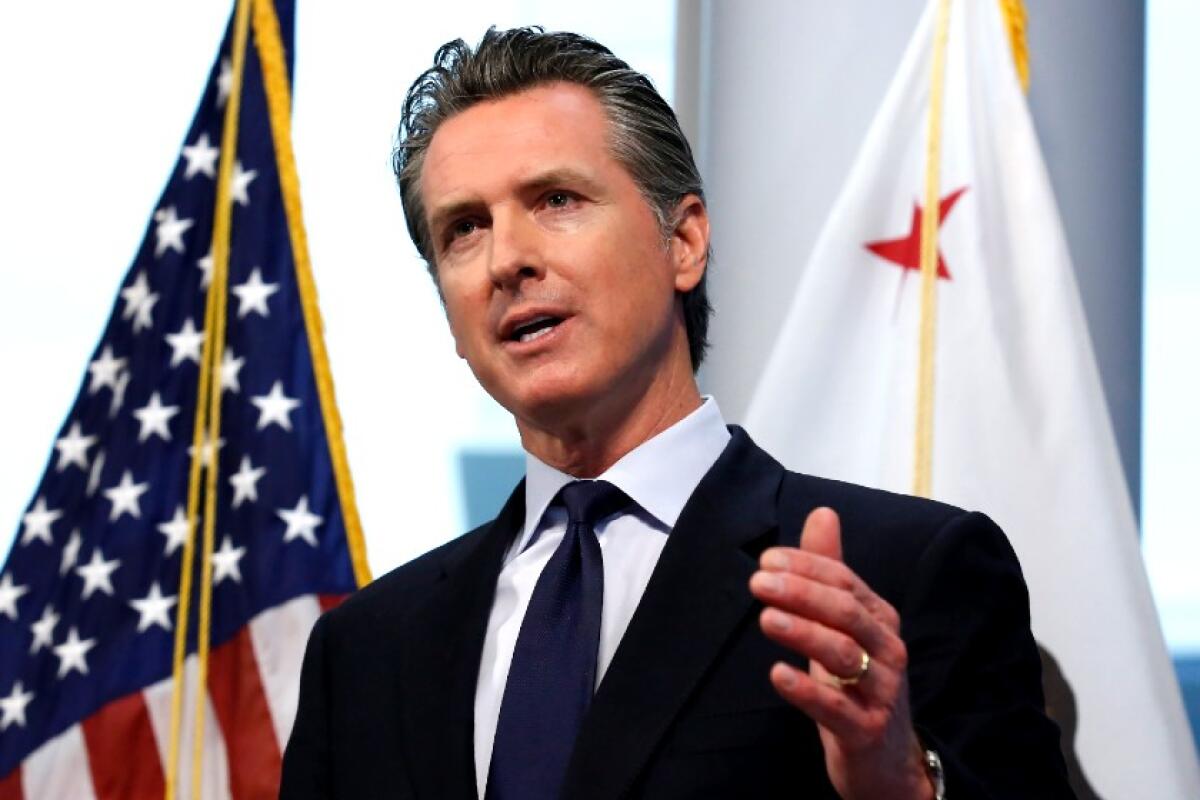
Caution in California’s optimism
Gov. Gavin Newsom expressed optimism Tuesday, saying California has no longer been reporting double-digit increases in hospitalization rates. Still, he cautioned that tougher days are ahead and forecast a peak of sick patients in May.
One vulnerable populations that remains are those in nursing homes, where the virus can spread easily.
A long-term-care skilled nursing facility in a Seattle suburb was an early epicenter of the outbreak, where two-thirds of residents and 47 workers fell ill and 37 people died.
Of the 21 people who have died from COVID-19 in California’s San Mateo County, 15 resided in congregate-care settings. The Los Angeles County public health director said Tuesday it would be “perfectly appropriate” for families to pull loved ones out of long-term-care facilities; as of Tuesday, 21% of L.A. County’s 173 coronavirus deaths were among residents of nursing homes or assisted living centers.
Risk of ending social distancing too early
Dr. Howard Markel, a professor of the history of medicine at the University of Michigan, said deploying stay-at-home measures required a degree of patience not to pull back too early.
“If you pull the triggers off too early, not only is there a circulating virus to do what it naturally does, but you will have incurred all the economic and social disruptions of [stay-at-home orders] for nothing,” Markel said in a webinar hosted by the American Public Health Assn. last month.
Markel said that during the 1918 flu pandemic, more than 20 U.S. cities that relaxed physical distancing orders too quickly — even as the flu virus was still circulating — soon saw a new rise in cases.
Exactly how officials might envision pulling back coronavirus stay-at-home orders, and to what extent people can return to their workplaces, is not yet known.
“It’s very, very difficult to know what parts we can scale back without compromising the progress that we’ve made,” Cody told the Santa Clara County Board of Supervisors.
Social distancing into 2022?
Some say that periods of social distancing may need to continue over the next two years.
A mathematical model developed by researchers at the Harvard T.H. Chan School of Public Health suggested that a one-time effort at social distancing, as the U.S. is undertaking this spring, wouldn’t be enough to keep coronavirus case levels low enough to prevent hospital systems from being overwhelmed.
If it’s true that the coronavirus can spread more easily in the autumn and winter, there could be a resurgence of infections later this year.

As a result, we might need long periods of social distancing, “perhaps with occasional periods of loosening,” to keep only a fraction of the population infected with the coronavirus at any one time, until a point at which large future outbreaks would be avoided, the Harvard study said.
Under one plausible scenario, social distancing measures could be fully relaxed by early to mid-2021, with the epidemic concluding by July 2022, Harvard researchers said. At that point, the coronavirus is anticipated to circulate seasonally, peaking in the winter.
Increasing the capacity of intensive care units would permit for longer breaks between periods of social distancing, said one of the authors of the study, Marc Lipsitch, epidemiology professor and director of the Center for Communicable Disease Dynamics at the Harvard T.H. Chan School of Public Health.
“This is not an easy policy,” Lipsitch said at the American Public Health Assn. webinar last month. “I’m not under illusions that this would be easy to do.”
How Singapore fell behind
There will continue to be the threat of the coronavirus being reintroduced in areas where the outbreak has eased.
Singapore, which took early, effective action against the coronavirus, was forced last week to order the closure of schools and nonessential businesses for a month as the numbers of cases rose when residents who lived and studied abroad rushed back home.
Officials in Singapore now say it is important to find sustainable ways to slow the virus through the end of the year.
Cases will rise when stay-home orders ease
The public should realize that coronavirus cases are likely to rise when stay-at-home orders are eased, said Smith, the Santa Clara County executive.
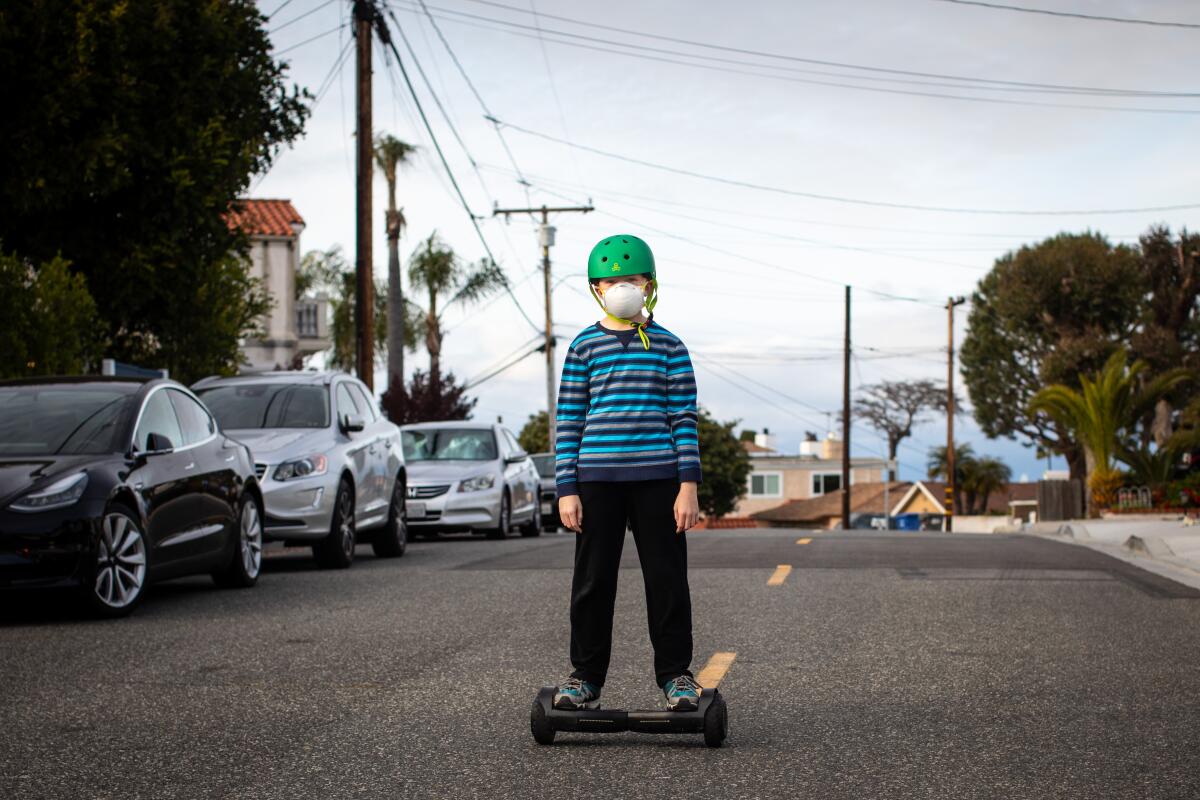
Fauci said during Monday’s news conference that he felt confident that over a period of time — likely 12 to 18 months — a good vaccine would emerge. Along with new therapies coming online, he said he was confident “we will never have to get back to where we are right now. So if that means getting back to normal, then we’ll get back to normal.”
Times staff writers Jack Dolan and Taryn Luna contributed to this report.
Struggling renters need relief if the U.S. is going to avoid the kind of suffering and economic devastation that played out after the Great Recession.
More to Read
Sign up for Essential California
The most important California stories and recommendations in your inbox every morning.
You may occasionally receive promotional content from the Los Angeles Times.


